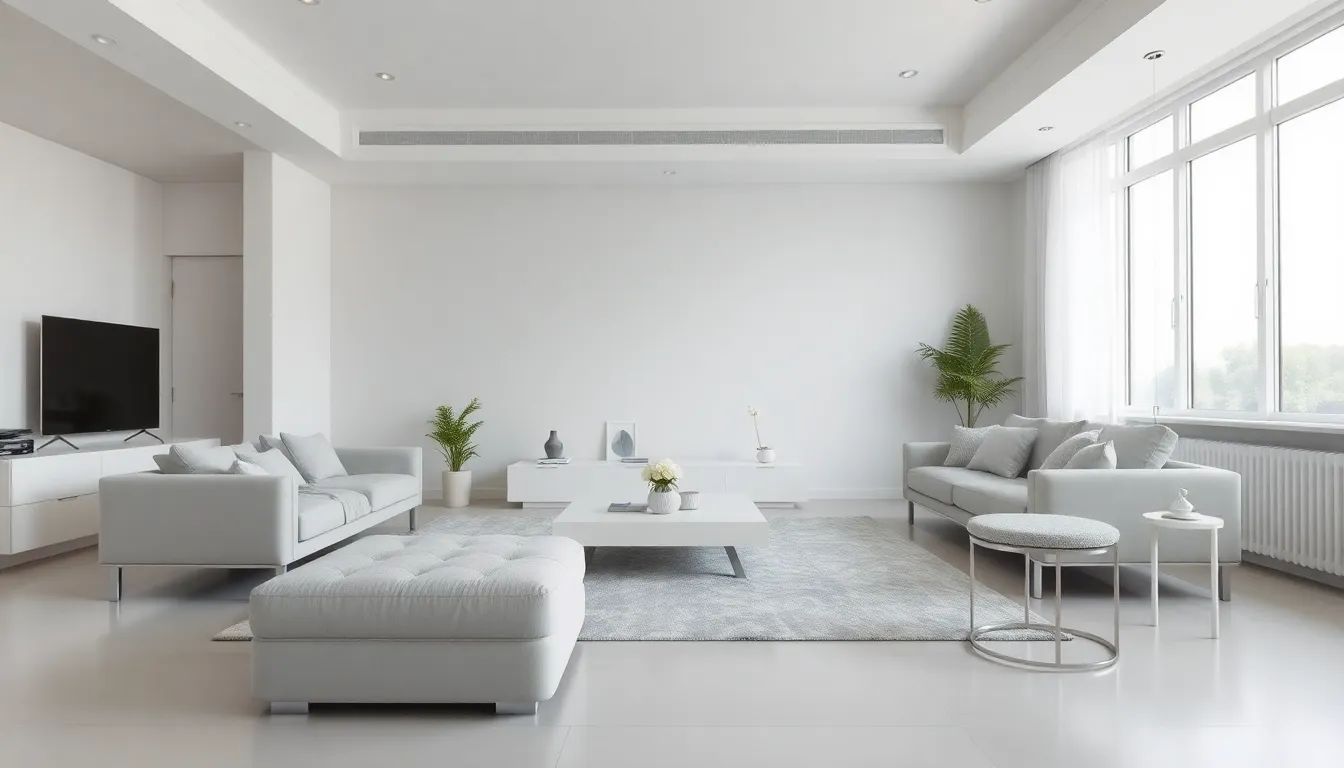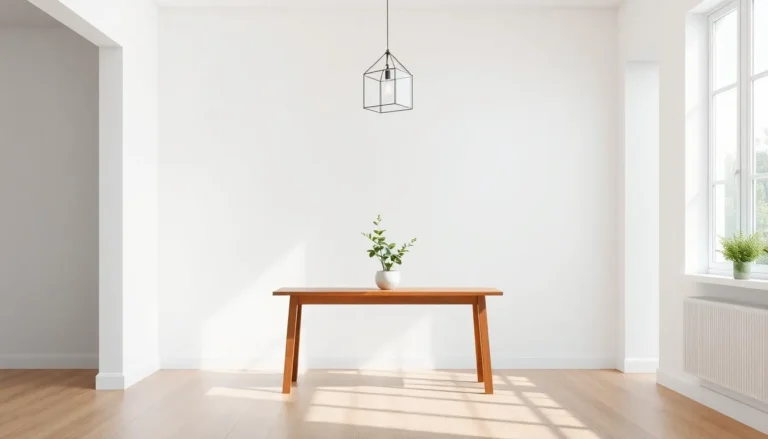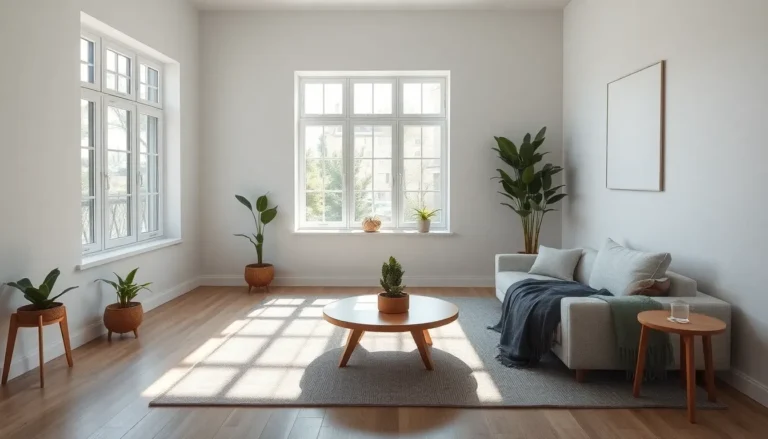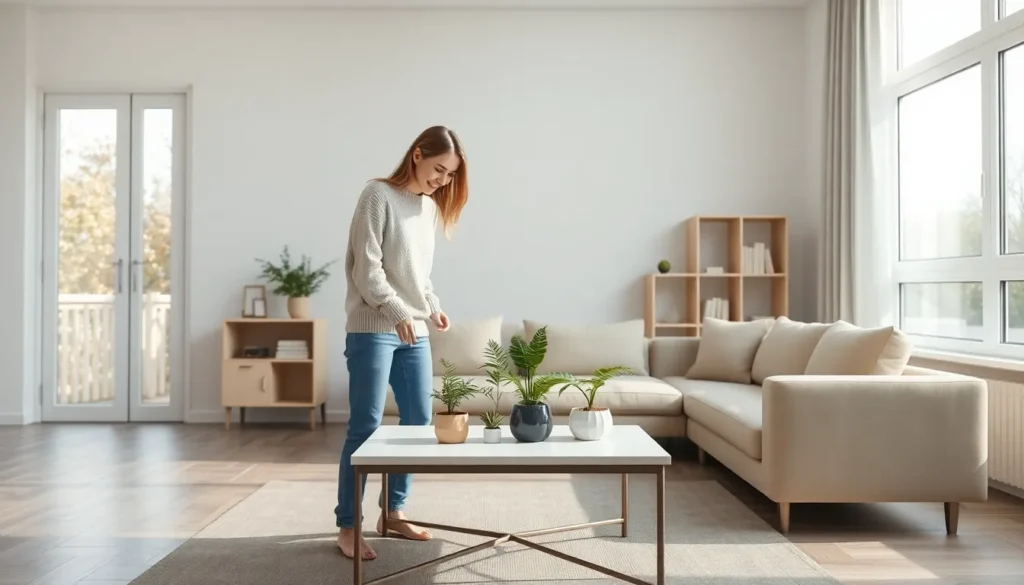Table of Contents
ToggleIn a world filled with clutter and chaos, minimal home design emerges like a breath of fresh air. Imagine walking into a space where every item has a purpose and every corner invites tranquility. It’s not just about fewer things; it’s about a lifestyle that embraces simplicity and serenity. Who wouldn’t want to swap their overflowing junk drawer for a zen-inspired sanctuary?
Minimalism isn’t just for the Instagram influencers or the yoga enthusiasts. It’s for anyone ready to reclaim their space—and their sanity. By stripping away the unnecessary, minimal home design creates a canvas for creativity and calm. So, if you’re tired of tripping over that collection of novelty mugs or can’t remember the last time you saw your coffee table, it’s time to rethink your space. Let’s dive into the world of minimalism and discover how less truly can be more.
Understanding Minimal Home Design
Minimal home design embodies a philosophy focused on simplicity and functionality. It encourages thoughtful living, prioritizing essential elements over excessive decor.
Key Principles of Minimalism
Clarity stands at the core of minimalism. Open spaces promote a sense of freedom and calmness. Functionality emphasizes the importance of practical design, ensuring each element serves a purpose. Natural light enhances the atmosphere, creating warmth while reducing reliance on artificial sources. Neutral color palettes create harmony, allowing furniture and decor to contribute without overwhelming.
Benefits of Minimal Home Design
Reduced clutter fosters tranquility, making daily life more manageable. Enhanced focus emerges in spaces free from distractions, boosting productivity and creativity. Cost savings arise from fewer items to purchase and maintain, leading to financial wisdom. Environmental impact decreases as minimalism encourages conscious consumption and sustainability. Personal well-being flourishes in serene settings, improving both mental and emotional health.
Essential Elements of Minimal Home Design

Minimal home design relies on specific elements to create an appealing and purposeful living environment. The focus on clarity, simplicity, and functionality promotes a peaceful atmosphere.
Color Palette
Neutral colors serve as the foundation for a minimalist home. Shades like white, gray, and beige enhance the feeling of space and serenity. Accent colors may appear in small doses but should maintain a subdued quality to avoid overwhelming the senses. Consistency in color maintains visual cohesion throughout the space. Selecting a limited color palette contributes to a harmonious and sophisticated aesthetic.
Furniture Selection
Choosing furniture emphasizes function over form. Multipurpose pieces, such as ottomans with storage, optimize space without sacrificing style. Essential furniture items should provide comfort while keeping the layout uncluttered. Minimalist designs often feature clean lines and simple shapes. Quality materials enhance durability and elevate the overall design. Embracing these principles fosters an inviting and organized atmosphere.
Creating a Minimalist Space
Creating a minimalist space involves careful planning and thoughtful execution. Emphasizing simplicity leads to a harmonious environment.
Decluttering Tips
Start by assessing each item in your home. If it doesn’t serve a purpose or bring joy, consider letting it go. Focus on one room at a time to avoid feeling overwhelmed. Use storage solutions that hide items, keeping surfaces clear. Avoid accumulating unnecessary items by adopting a one-in, one-out policy. Regularly evaluate your possessions to maintain order and simplicity.
Integrating Functional Spaces
Design spaces with multi-functionality in mind. For example, choose furniture that serves multiple purposes, such as a sofa bed or an ottoman with hidden storage. Create zones within rooms to define activities, such as a reading nook or a work area. Ensure each element has a distinct role to reduce clutter and improve efficiency. Incorporate natural elements like plants to enhance both aesthetics and air quality, contributing to overall well-being.
Challenges in Minimal Home Design
Minimal home design presents unique challenges that require thoughtful consideration. Misunderstandings about its essence often arise, leading to confusion among homeowners.
Common Misconceptions
Many believe minimalism equates to a lack of personality. This assumption overlooks the potential for distinct style within simplicity. Another misconception asserts that minimalism limits choices, while it actually enhances clarity in selections. People often think minimalist spaces feel cold or uninviting, contradicting the warmth achievable through natural materials and thoughtful layouts. These misunderstandings can hinder those interested in adopting a minimalist lifestyle, requiring education on the true nature of minimalist design.
Overcoming Design Hurdles
Designing a minimalist space involves overcoming practical hurdles. First, individuals often struggle with decluttering. Systematic approaches like the one-in, one-out rule aid in maintaining order. Incorporating multitasking furniture also enhances efficiency, allowing rooms to remain functional without excess. Furthermore, creating designated areas fosters organization, simplifying daily routines. Finally, embracing flexibility allows for adjustments over time, ensuring spaces evolve without cluttering. Each of these strategies contributes to a successful minimalist environment.
Embracing minimal home design transforms living spaces into serene havens that prioritize functionality and clarity. By focusing on essential elements and eliminating clutter, individuals can create environments that enhance well-being and foster creativity. This approach not only simplifies daily life but also promotes a mindful lifestyle that values quality over quantity.
With practical steps for decluttering and thoughtful design choices, anyone can cultivate a minimalist home that reflects their unique style while providing a tranquil atmosphere. Ultimately, minimalism offers a path toward a more intentional and fulfilling way of living, proving that less truly can be more.







